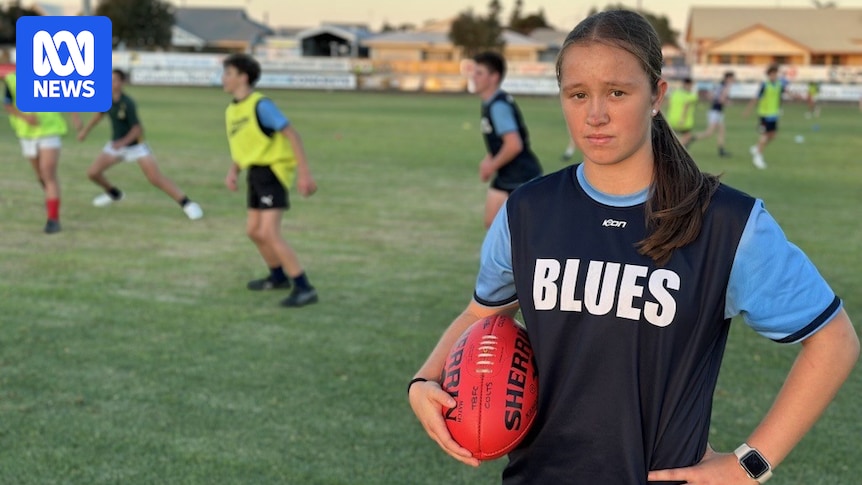
In a move that has sparked widespread controversy, one of Australia’s top young female footballers, Lani Cocks, has been barred from playing in the Eyre Peninsula boys’ Aussie rules competition due to her gender. The decision, which aligns with official AFL and modified South Australian rules, has left Lani and several other girls unable to compete in the boys’ league, despite having already paid for the season.
Lani, who is 15 and has been playing in the boys’ competition since she was seven, was recently named Most Valued Player (MVP) at the All-Australian Championships. Her exclusion from the Tumby Bay Under 16s, where she served as vice-captain, was announced shortly after she won best on ground in a match last Saturday.
Community Outrage and Lack of Communication
The decision has ignited anger among country football clubs across the Eyre Peninsula. Many claim that the South Australian National Football League’s (SANFL) policy was not communicated to them before the season began. According to reports, some girls were informed mid-match, while others found out after the final siren of the first game.
“It was pretty upsetting coming off a high playing at a state level and then being told afterwards I couldn’t play,” Lani expressed. “It’s really disappointing, I feel like I’ve had something taken away from me that I’m really passionate about.”
Impact on Local Teams
Robert Shirley, a coach in the Cummins Ramblers Under 16s and former AFL Crows player, voiced his disappointment over the ruling. His team is now two players short, including his daughter, Annabelle, who was also barred from playing.
“Girls were able to register and pay without a problem up until round one, so why didn’t the SANFL pick up on anything about it happening until now?” Shirley questioned. “It has been handled very poorly and the ruling itself, I completely disagree with.”
The ruling has left local teams struggling with player numbers, a challenge for many country teams already facing a shortage of volunteers and participants.
The Science and Safety Debate
While the SANFL cites safety and insurance as reasons for the ruling, the scientific basis of these concerns is being questioned. Michael O’Shea, a senior lecturer at Western Sydney University, challenged the notion that age and gender should be the primary considerations for player eligibility.
“Just because a boy is 16 doesn’t mean that his skill level is as good or better; it doesn’t mean that his playing history is the same or better,” O’Shea argued. “The science is saying that age and gender aren’t the only considerations.”
O’Shea highlighted emerging research suggesting that age and gender may not be the best indicators for determining player safety and capability.
Opportunities for Female Players
SANFL manager Matt Duldig emphasized the league’s commitment to creating opportunities for female footballers, stating that exemptions are considered on a case-by-case basis. However, he noted that girls cannot play with boys if there is access to a girls’ or women’s competition within a reasonable distance.
“In the Eyre Peninsula region, there is a thriving Port Lincoln Women’s Football League with senior and under-age competitions,” Duldig said. “Exemptions are approved with the main consideration being whether there is an appropriate all-girls competition nearby.”
Looking Forward
The controversy has prompted discussions about the future of mixed-gender sports and the policies governing them. As the debate continues, stakeholders are calling for clearer communication and more inclusive policies that consider the needs and aspirations of young female athletes.
For Lani and her peers, the ruling is a setback in their football journeys, but it also highlights the ongoing struggle for gender equality in sports. As the season progresses, the focus will be on how the SANFL and other leagues address these challenges and work towards more equitable solutions.





